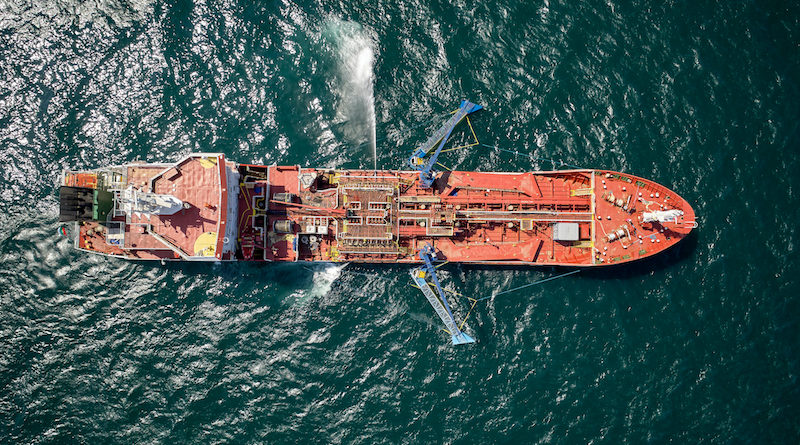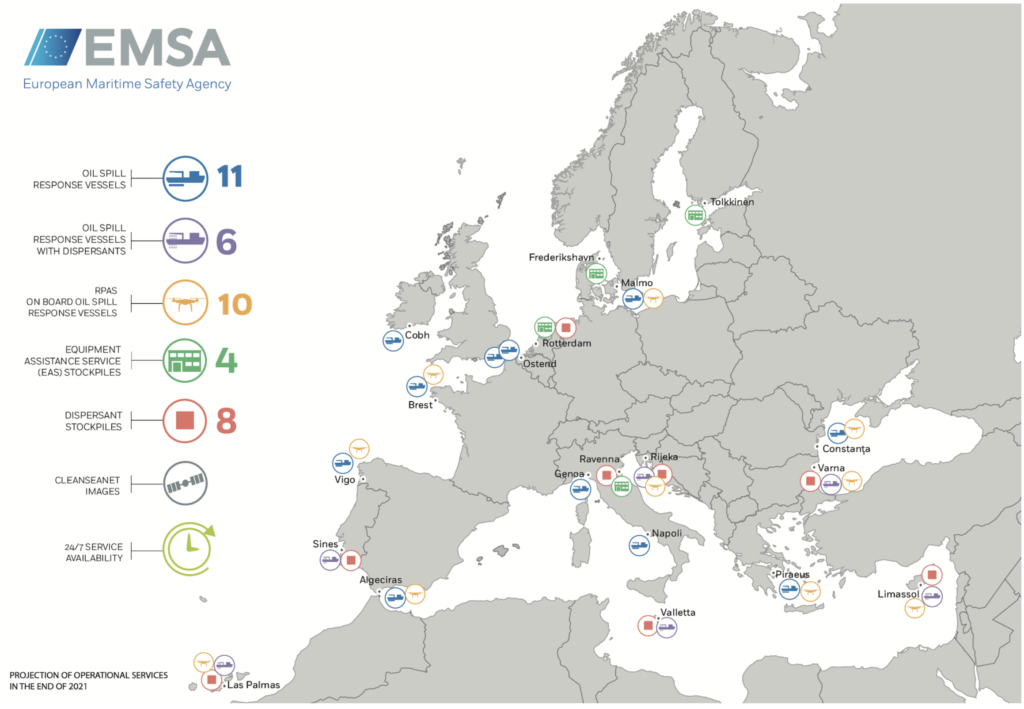
The overall objective is to enable safe, secure and sustainable maritime transport
Maritime transport is essential to our collective well-being. It is often said that without it half the world would starve while the other half would freeze. The figures are worth repeating: 90% of world trade, and 77% of EU international trade is moved by the sea. Within the EU, 35% of intra-European trade is served by maritime transport. Even throughout the COVID-19 pandemic, shipping continued to demonstrate its importance as it kept vital supply lines open delivering essential commodities, including food, fuel and medical supplies.
Our work at the European Maritime Safety Agency was mandated back in 2002 as part of the so called Erika II package in response to the disaster which polluted hundreds of km of EU coastline. This coming year we celebrate twenty years working in the field to deliver on our regulatory mandate of ensuring a high, uniform and effective level of maritime safety, maritime security, prevention of and response to pollution caused by ships as well as response to marine pollution caused by oil and gas installation.
The European Green Deal is a very clear priority for the EU and our work is contributing in a very tangible way to its aims and ambitions both in terms of prevention and response.
EMSA is supporting efforts towards zero emission shipping by: harmonising the implementation and enforcement of relevant legislation; developing and providing tools supporting ship inspection; and providing operational support.
As a decentralised agency of the EU, we are tasked to assist the European Commission in the development of new legislation and in ensuring the harmonised implementation across the EU and internationally of relevant EU legislation; we carry out visits to member states to monitor the implementation of EU maritime safety, security and environmental laws; we carry out inspections to classification societies; and, we inspect the maritime education training and certification systems for seafarers of non-EU countries.
We also develop knowledge through studies. In particular, we have been looking at the issue of fires on the vehicle decks of ro-ro passenger ships, the regulatory side of ships’ steering and manoeuvrability as well as autonomous ships and we are carrying out a series of studies on alternative fuels thereby supporting their up-take and looking at the safety aspects of their introduction.
On the operational side, our contingency plan can be activated at any time, giving the requesting state access to a whole host of services – from remotely piloted aircraft to satellite imagery, oil pollution response to vessel tracking. The plan has been activated 17 times so far this year, ranging in geographical scope from the Black Sea to the Mediterranean, and the Atlantic to the Indian Ocean.
When it comes to our remotely piloted aircraft systems, we have become the largest provider of RPAS services in the civilian domain in Europe. These services support national authorities and other EU agencies in a huge variety of coast guard related tasks from maritime surveillance, search and rescue, and fisheries control to emissions monitoring, pollution prevention and law enforcement.
Ten of our oil spill response vessels are also now equipped with drones, to support national authorities in case of emergency, as happened in Greece recently when the Sea Bird tanker struck Karavi island off Crete. The RPAS was able to quickly identify areas of pollution and make clean-up operations more efficient. These services are becoming increasingly regional with a multipurpose approach to better maximise the service and bring added synergies.
Security is a growing area of concern for the EU and EMSA can and is making a difference there. First and foremost by assessing the level of implementation of the relevant EU and international legislation. But also by sharing information services with the EU’s naval forces as part of the Common Security and Defence Policy in order to address security threats such as terrorism, armed robbery and piracy, and in doing so to help protect the EU merchant fleet worldwide.

Day-to-day, we work to provide a comprehensive real time picture of the maritime domain to our European maritime stakeholders. Our integrated maritime services are based on 45 million individual ship messages a day, encompassing over 6000 users served by us 24/7, 365 days a year.
We deliver 1200 satellite images per month to support EU efforts to reduce pollution and increase maritime safety with strengthened surveillance capacities. And, so far this year, around 8000 automated behaviour monitoring alerts were sent, identifying targeted behaviour in the maritime domain, thereby raising safety and security in our waters.
As part of our capacity building activities, we have been offering training to the staff of national authorities to ensure harmonisation throughout the EU and beyond. In the past year we have trained remotely nearly 1000 officers, leveraging new technology like virtual reality to ensure immersive training experiences, this is being housed in the recently formed EMSA Academy.
While 2021 saw two major report releases of the COVID-19 Impact on Shipping Report on the one hand and the European Maritime Transport Environmental Report on the other, safety issues will be firmly in our spotlight in 2022 as we launch the first edition of the European Maritime Safety Report to coincide with our twentieth-year anniversary.
Data from all across the various systems hosted by our agency will come together in this report to provide insights into the current state of maritime safety in the EU.
As our sector arrives at a crossroads in many aspects, it will be more important than ever for us to foster cooperation at European level to ensure safer, more secure and sustainable maritime transport.




